
Generalized Phrase Structure Grammar provides the definitive exposition of the theory of grammar originally proposed by Gerald Gazdar and developed during half a dozen years' work with his colleagues Ewan Klein, Geoffrey Pullum, and Ivan Sag. This long-awaited book contains both detailed specifications of the theory and extensive illustrations of its power to describe large parts of English grammar. Experts who wish to evaluate the theory and students learning GPSP for the first time will find this book an invaluable guide.
The initial chapters lay out the theoretical machinery of GPSP in a readily intelligible way. Combining informal discussion with precise formalization, the authors describe all major aspects of their grammatical system, including a complete theory of syntactic features, phrase structure rules, meta rules, and feature instantiation principles. The book then shows just what a GPSP analysis of English syntax can accomplish. Topics include the internal structure of phrases, unbounded dependency constructions of many varieties, and coordinate conjunction—a construction long considered the sticking point for phrase structure approaches to syntax.
The book concludes with a well developed proposal for a model theoretic semantic system to go along with GPSP syntax. Throughout, the authors maintain the highest standards of explicitness and rigor in developing and assessing their grammatical system. Their aim is to provide the best possible test of the hypothesis that syntactic description can be accomplished in a single-level system. And more generally, it is their intention to formulate a grammatical framework in which linguistic universals follow directly from the form of the system and therefore require no explicit statement. Their book sets new methodological standards for work in generative grammar while presenting a grammatical system of extraordinary scope.
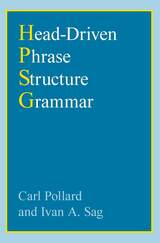
This self-contained volume demonstrates the applicability of the HPSG approach to a wide range of empirical problems, including a number which have occupied center-stage within syntactic theory for well over twenty years: the control of "understood" subjects, long-distance dependencies conventionally treated in terms of wh-movement, and syntactic constraints on the relationship between various kinds of pronouns and their antecedents. The authors make clear how their approach compares with and improves upon approaches undertaken in other frameworks, including in particular the government-binding theory of Noam Chomsky.
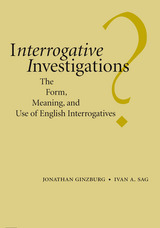
This book closes the gap in research on this subject. By developing the frameworks of Head Driven Phrase Structure Grammar and Situation Semantics, the authors provide an account that rigorously integrates syntactic, semantic, and contextual dimensions of interrogatives. The challenge of providing exhaustive coverage of the interrogative constructions of English, including various constructions that occur solely in dialogue interaction, leads to new insights about a variety of contentious theoretical issues. These include matters of semantic ontology, the quantificational status of wh-phrases, the semantic effect of wh-fronting, the status of constructions in grammatical theory, the integration of illocutionary information in the grammar, and the nature of ellipsis resolution in dialogue. The account is stated with sufficient rigor to enable fairly direct computational implementation.
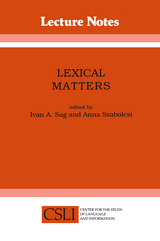
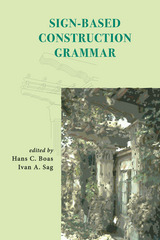
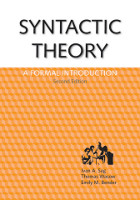
The book covers the core areas of English syntax from the last quarter century, including complementation, control, "raising constructions," passives, the auxiliary system, and the analysis of long distance dependency constructions. Syntactic Theory's step-by-step introduction to a consistent grammar in these core areas is complemented by extensive problem sets drawing from a variety of languages.
The book's theoretical perspective is presented in the context of current models of language processing, and the practical value of the constraint-based, lexicalist grammatical architecture proposed has already been demonstrated in computer language processing applications. This thoroughly reworked second edition includes revised and extended problem sets, updated analyses, additional examples, and more detailed exposition throughout.
Praise for the first edition:
"Syntactic Theory sets a new standard for introductory syntax volumes that all future books should be measured against."—Gert Webelhuth, Journal of Linguistics
READERS
Browse our collection.
PUBLISHERS
See BiblioVault's publisher services.
STUDENT SERVICES
Files for college accessibility offices.
UChicago Accessibility Resources
home | accessibility | search | about | contact us
BiblioVault ® 2001 - 2024
The University of Chicago Press









